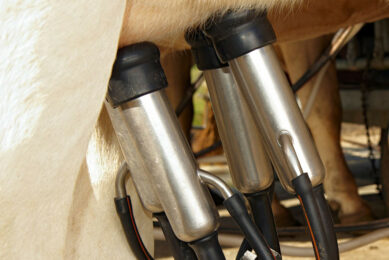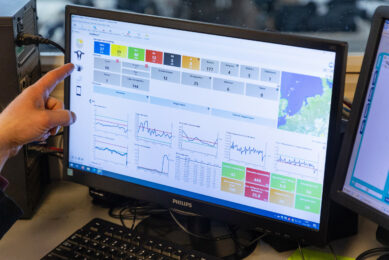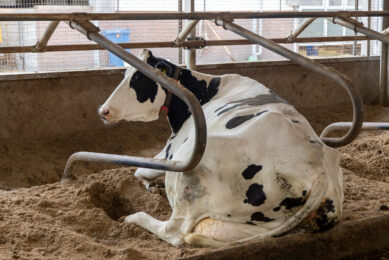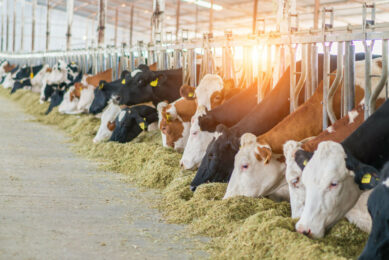Advances in dairy welfare precision technologies
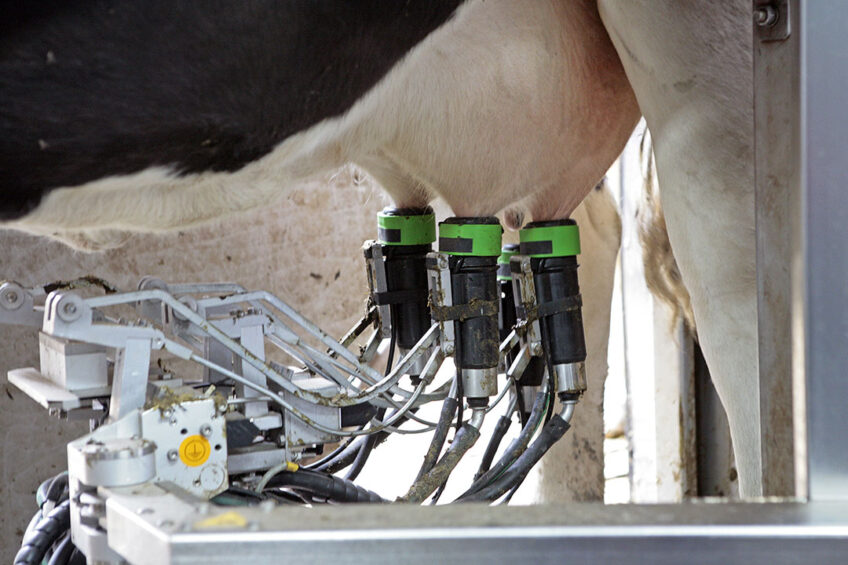
Researchers from the University of Trás-os-Montes and Alto Douro in Portugal explain how recent work on precision technologies is helping evaluate lameness, mastitis and body condition, which are key welfare indicators for dairy cows.
In milk production, there is a strong need to assess the welfare of dairy cows. The assessment of cow welfare with animal-based indicators is time-consuming and expensive – precision livestock farming solutions provide a way forward. However, precision technologies are not without drawbacks. In this review, researchers point out key things to remember when adopting precision technologies to evaluate welfare indicators in dairy cows.
Measuring welfare of dairy cows
According to the researchers, there are 3 common welfare evaluation systems for dairy cattle:
- Farmers assuring responsible management in USA
- The code in New Zealand
- Welfare quality in Europe
These systems are usually time-consuming, which limits their routine application in dairy farms. Another welfare evaluation system – the integrated diagnostic welfare system – uses technology to evaluate animal welfare. However, this system requires large amounts of data to be recorded around animal behaviour, health and welfare conditions, making the use of precision technologies the solution.
Lameness
Lameness is mainly detected at an advanced stage and thus requires immediate and often costly treatment. Automated lameness detection techniques reduce the time from lameness onset to treatment, preventing cases from becoming severe, speeding up recovery, increasing production and improving welfare.
Pressure plate/load cell
This technique examines how the weight is distributed across the legs of the animal as it walks through pressure-sensitive equipment. Stance time asymmetry, as measured by a Gaitwise pressure sensor, and 3-dimensional force plate measurements of hind legs have been identified as approaches for identifying cow lameness. The disadvantage of the Gaitwise system is the larger installation space and cost. However, new research shows that the cost can be reduced by decreasing mat length and sensor resolution without decreasing the lameness detection performance.
Image-processing techniques
These techniques analyse posture as the animal walks through an alley or to a milking parlour. Remote-sensing solutions such as 2D or 3D video cameras have excellent potential as lameness-monitoring systems. However, there are challenges when developing algorithms for such devices, as one algorithm has to work for multiple animals even though cows have individually specific ways of walking and each express lameness in a particular way. The researchers suggest that individualised monitoring systems using animal-level historical data would achieve better detection accuracy than population-based monitoring systems.
Activity-based techniques
These techniques use accelerometers (2D and 3D) to record the movement patterns of the animal. The data is then used to build a picture of the daily activities of the cow, for example, walking and lying down. However, measures of lying time are not reliable indicators of lameness, as lying time is influenced by many factors other than lameness. For this reason, further research focusing on measures of lying time alone to support automated lameness detection is unlikely to be successful. Researchers suggested that when using both gait and behaviour measures, accelerometers should have high sensitivity and specificity.
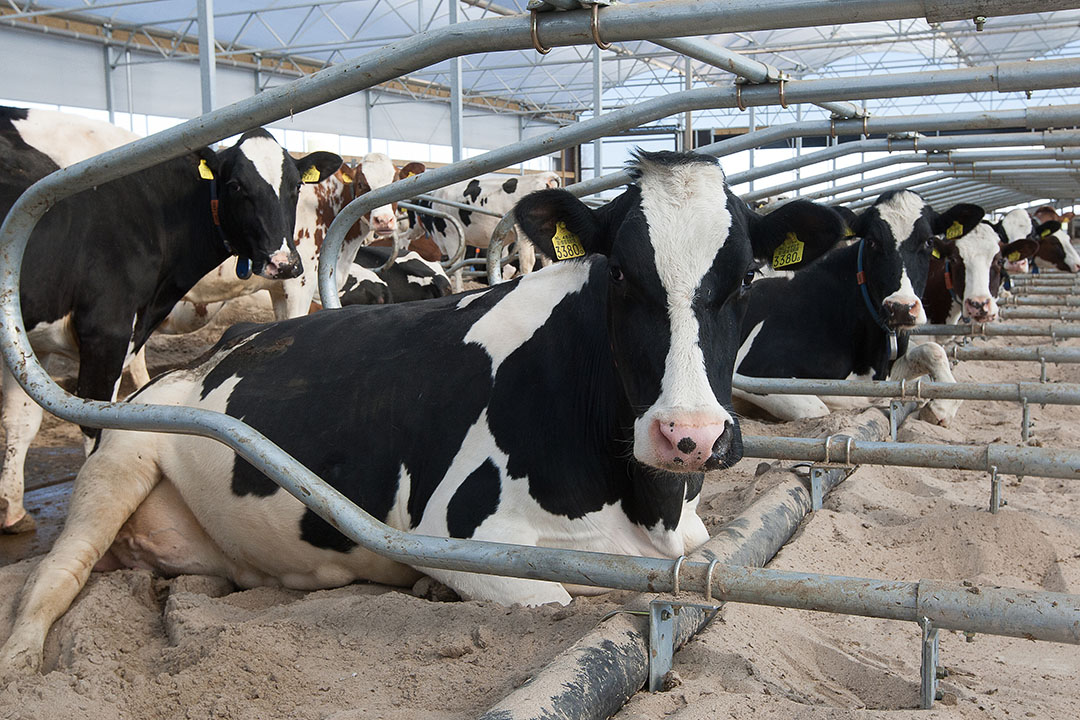
Mastitis
Mastitis is one of the most common diseases in dairy cows and has well-recognised detrimental effects on welfare and dairy farm profitability. Efficient mastitis detection provides an opportunity to implement early and adequate treatment protocols, avoiding excessive use of antibiotics while improving economic returns to farmers.
Somatic cell count and electrical conductivity
This is a widely used indicator of udder health status in dairy cows that is used at the quarter, cow and bulk-tank levels. The industry has advanced towards developing new sensors that are designed explicitly for udder health surveillance. One of these is the DeLaval Online Cell Counter, which allows repeated measurements of cell counts at the cow level and can be implemented in automatic milking systems.
Electrical conductivity (EC) and enzymatic concentrations of lactate dehydrogenase (LDH) have been used as indicators to detect mastitis. Recent works have shown the potential of using sensors for the automatic measurement of EC and LDH. However, there is still need for further research in this field, as results show high variation.
Infrared thermography (IRT)
IRT is a non-invasive technology that allows accurate temperature measurement from a distance; it has been successfully used for early mastitis detection. However, the technique is time-consuming and requires a skilled examiner. Scientists suggest the automatic evaluation of thermograms as a better method that involves automatic segmentation to omit unnecessary warmer regions such as the udder-thigh cleft.
Body condition scoring
The routine evaluation of body condition is based on visual observation and palpation of specific body areas to determine a score that assesses the adipose tissue and muscle mass deposits. The technique brings subjectivity in judgement as well as time-consuming on-farm training of technicians. Recent advances show the relevance of using ultrasound to assess the body reserves of cows with ultrasonic measurement to scan the body regions that are connected to the body condition scoring evaluation. However, cows must be individually restrained to capture the ultrasound images, making this technique less suitable.
Future perspective
Precision livestock farming technologies have proven to be a step forward in the individual assessment of cows by continuous real-time monitoring of health and welfare. In addition, it is important for future research into technology to ensure the welfare of dairy cows has provided several indicators that could be automatically measured and integrated into a welfare assessment system.
This article is based on the original article by Silva, S.R., Araujo, J.P., Guedes, C., Silva, F., Almeida, M., and Cerqueira, J.L., et al. 2021. Precision technologies to address dairy cattle welfare: Focus on lameness, mastitis and body condition. Animals 11(8), 2253. https://doi.org/10.3390/ani11082253.
Join 13,000+ subscribers
Subscribe to our newsletter to stay updated about all the need-to-know content in the dairy sector, two times a week.



